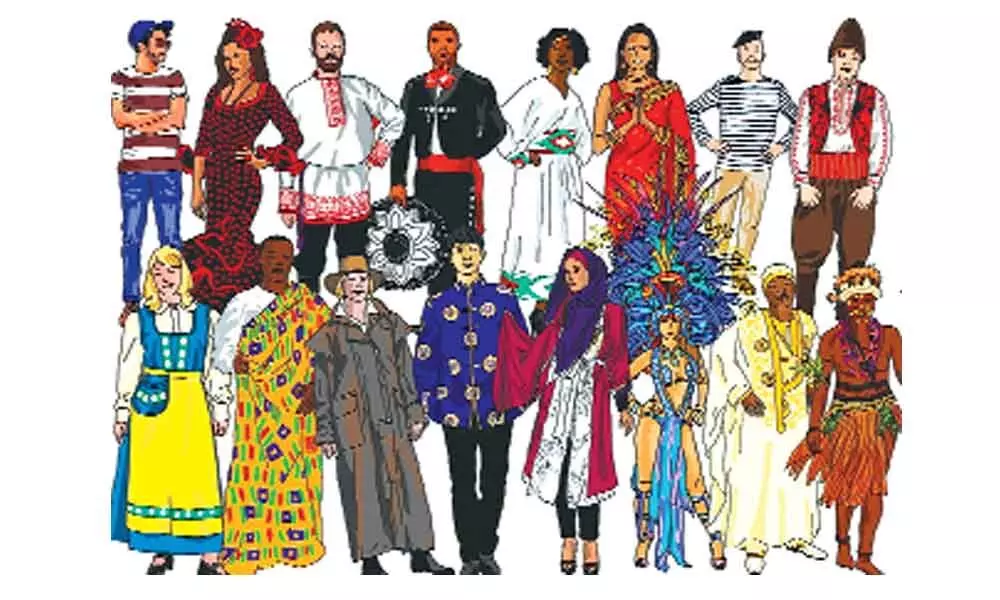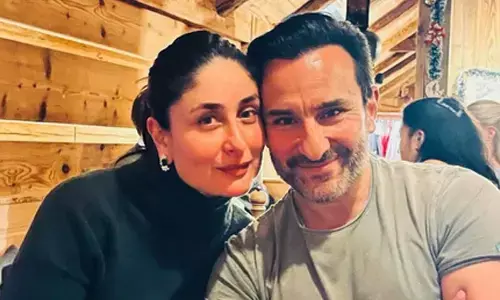From social identity to popular culture

In the early 1960s, my father decided to try his hand, once again, at practising law, this time in the Supreme Court at Delhi, after his retirement as a Judge of the Andhra Pradesh High Court.
In the early 1960s, my father decided to try his hand, once again, at practising law, this time in the Supreme Court at Delhi, after his retirement as a Judge of the Andhra Pradesh High Court. One of the major challenges one had to adjust with there was the extreme heat, and unbearable cold, for which the national capital is known. Father, in particular, partly on account of age, and partly because of his vulnerability to exposure - related health issues, found it particularly difficult to protect himself especially in the winters. He would, therefore, use several layers of cotton and wool clothing as a means of insulation against the harsh cold and wind. So much so that, on one occasion, when all of us had gone to call on Dr CD Deshmukh and his wife Durgabai, Deshmukh greeted father with a smile saying, "Bhimasankaram, you appear to be dressed for a trip to Timbuktu!".
On my part I was not quite certain about how to adjust to the cold either. I would, sometimes, wear a T-shirt and go to college and be the butt of ridicule of my friends. Such bravado was considered foolish by the others, who knew the risks which needless exposure carried with it. Over time, however, I learnt to come to terms with the weather. While on the subject I recollect what Mrs. Vij, wife of General N.C. Vij, Vice-Chairman of the National Disaster Management Authority, of which I was a Member at that time, advised me decades later. "Sar nanga, chaathi dhaka aur paanv garm", was her formula. As they were both from Jammu I followed the advice scrupulously and found that a bare head, a well-covered chest and warm feet did the trick after all.
Early human clothing was necessarily functional, permitting hunter-gatherers, for instance, a certain degree of protection from the elements while maintaining ease of movement. Looking back over the course of human history, one sees how important clothing has been, not only in the process of conveying important information about ourselves and the groups with which we associate, but also in the process of establishing certain cultural and social norms that provide both shape and structure to society. We can go as far back as the Garden of Eden to find examples of the ways in which "dress controls" "extend far beyond the tentacles of formal government and are underpinned by a rich variety of rationales". In Eden, Adam and Eve were originally unclothed, (or in the buff or the altogether in modern language), but then covered their genitals with fig leaves to achieve modesty. Such aboriginal tribes still exist in a few densely forested and isolated regions of Australia, Papa New Guinea and the Nicobar islands. Ever since, clothes have been one way to establish our identity and communicate with others.
In most cultures, clothing was introduced as a method of protecting the human body against extreme weather conditions-strong winds, intense heat, cold and precipitation. Dhotis and lungis in South India, woolen suits in cold regions
Our personal image communicates volumes about who we are, what we believe, what we consider important, and how we want others to view us.
People wear clothing for functional as well as social reasons. Apart from the practical functions of placing a piece of garment above the skin, wearing clothes also carries specific cultural and social meanings.
The clothes one wears reflect one's image, good or bad, positive or negative. They can convey a clear message to others about the various aspects of one's personality such as the personal, cultural, functional and historical. The way the signal is understood, however, depends substantially upon the culture, and region, which one belongs to. For instance, wearing black is considered inauspicious in the West and is largely confined to solemn and sad occasions, such as funerals, which is not so elsewhere in the world. Similarly a woman wearing a 'purdah' or a 'hijab' clearly indicates her religious and cultural background. In India, particularly in the South, men prepare for a meal by wearing a Dhoti while it is customary to dress for meals in the West.
Men and women of India wear different types of clothing depending on their region, religion and culture. Normal dress choices for women include salwar and kameez, and or a saree and blouse. Popular clothes for men include dhoti, lungi, kurta, pajama, chudidaar, and sherwani or achkan, or a suit. Abroad, for instance in Scotland, the traditional dress for men in is a Sporran, while women traditionally wear a Tartan skirt, and a shawl or sash. The traditional dresses which exhibit the Spanish culture include farthingales, corsets, and whalebones. Early clothing in African and Native American tribes, was extensive with a rich tradition of elaborate decorations, especially for ceremonial purposes. The degree and quality of decoration, as well as the materials used, signified the wearer's rank in the social order. Eagle feathers and elaborate headdresses, for instance, were reserved for elders and important tribal leaders. Some tricks of clothing were also believed to have spiritual and protective powers.
In some regions of the world, typically Asia, clothing reflects the caste system. In India, it also reflect sects, religious identities, and culture. For example, the turban wrapped in a particular manner indicates that the person is a Sikh. Besides religious aspects, clothes reflect their cultural associations as well. Similarly, the orange dress worn by Monks reflects their particular religious affiliation and a certain way of living.
Sporting dresses of distinctive design and colours also go with some popular sports and games, such as cricket, swimming and polo. It is, of course a different matter, that the players turn out these days in garishly coloured clothes made even louder by logos advertising the products for which they are 'brand ambassadors'! Not for them the pure white flannels that characterised the 'gentleman's game' of yore. Batsmen and wicket – keepers in cricket and goalkeepers in football and hockey also wear helmets, gloves and thigh pads to protect their faces, legs and hands. Cricketers also wear abdominal guards, especially while keeping wickets and batting. Helmets are also worn, in addition to gloves and teeth bite guards by boxers.
There is a distinction between industries when it comes to clothes worn at work. For example, the dress code of an IT startup is different from what we might see in a law firm. Those who work in offices are called 'white collar' workers, while 'green collar' workers are those who work in factories. Distinctive dresses are also common in establishments such as hospitals, where the doctors wear overalls, and the nurses' gowns, all in white. Just as the profession of medical practitioners is end paramedical staff characterised generally by white (or sometimes, gray) overalls, black gowns with white collars are worn by lawyers and judges who, originally in the UK, also sported wigs.
Wearing owing robes and gowns a practice followed during important events. There is a 'Robing Room' adjoining the House of Lords in Britain where the queen puts on her ceremonial robes before addressing the House of Lords signifying the opening of a session of Parliament. It is customary also, for those participating in the Convocation Ceremonies in Universities, to wear robes to signify the solemnity of the occasion.
There is this story about a man peeping into a nudist colony, having climbed on to the surrounding wall, using a ladder. His friend shouts from down below, "Are they men or women inside"? And Peeping Tom replies, with a sheepish grin, "How do I know? They are not dressed". Such is the importance that dress has come to acquire in our days, that we are unable to distinguish even between sexes without its benefit!
(The writer is former Chief Secretary, Government of Andhra Pradesh) (The opinions expressed in this column are that of the writer. The facts and opinions expressed here do not reflect the views of The Hans India)















